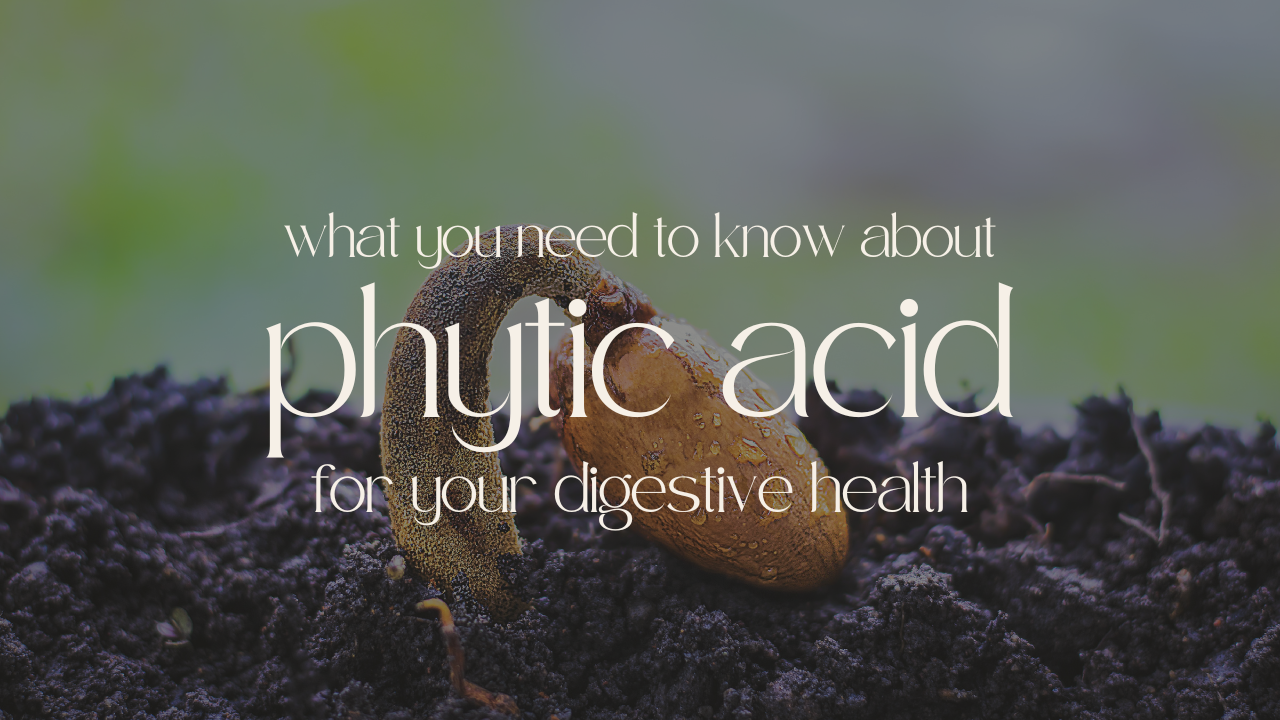Is Phytic Acid Good Or Bad For Your Health?
Nov 02, 2022
Plant-based foods are packed with nutrients, but could some of them actually be leaching nutrients from your diet? Let’s discuss this anti-nutrient, what it does, and how to avoid the negative side effects.
Phytic acid (or phytate, when it’s bound to a mineral) is a unique natural substance found in plant seeds. It’s well known for its effects on mineral absorption. Phytic acid has been shown to impair the absorption of iron, zinc and calcium and may promote mineral deficiencies. This is why it is often referred to as an anti-nutrient.
On the flip side, it’s also been linked to health benefits such as protecting kidneys against stones, and reduced risk of diabetes, cardiovascular disease, and cancer. It's an antioxidant as well as an anti-nutrient! So why is this important to mention?
Those who eat a high-phytate food diet (AKA vegetarian and vegans) need to be aware of this, especially if they are experiencing digestive troubles.
Bloating, skin conditions, hormone imbalances, hemochromatosis, insulin resistance, diabetes, gut-health issues… etc.
Its main purpose is to store phosphorus in the seeds, which supports the plant’s ability to grow and develop. We find phytic acid in varying amounts in foods like:
Nuts, seeds, grains, legumes, and small amounts in roots and tubers.
The natural purpose for this is that a bird would eat a seed, and the phytic acid would prevent the bird from digesting it properly. Then, when the bird flies to a new place and poops, the seed can be planted.
It’s an evolutionary process for the plant to reproduce!
Fortunately, there are several ways we can reduce phytic acid and enjoy these scrumptious foods… and even enhance them for ultimate health!
Soaking
Soaking overnight will reduce phytate significantly.
Ex. Oats, legumes (before boiling), nuts, quinoa
Sprouting (germination)
Seeds, grains, and legumes are delicious when sprouted, and enhanced!
Ex. Lentils, mung beans, brown rice, seeds (alfalfa, broccoli, radish...etc)
Fermentation
Lacto-fermentation is the preferred method, and can be done within 3-5 days (or more), and preserve for extended periods of time. This is the traditional method of preservation, and the most enhanced version of food for your gut, brain, skin, and overall health.
Ex. Tempeh (soybean, or other legumes), sourdough bread, kimchi, sauerkraut, condiments… etc.
RECAP:
- Phytic acid is both good and bad. As always, the positive or negative effects will depend on your unique dietary needs
- It’s linked to mineral deficiencies (calcium, iron, zinc)
- 3 main methods of reducing it in your food (soak, sprout, ferment)
ACTION STEPS:
- Follow a well-balanced diet.
The good news is that this applies to a single meal, not to all of your subsequent meals. However, when you eat high-phytate foods with most of your meals, this may contribute to mineral deficiency in the long-term. - Take time to properly prepare your food. Set aside 3-5 hours a week for this (maybe less)
- Download the printable soaking and sprouting chart to keep in your kitchen for easy food activation!

